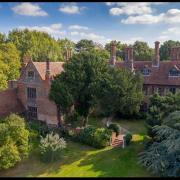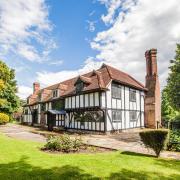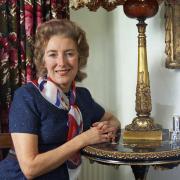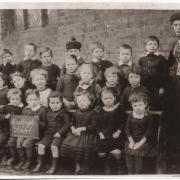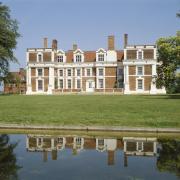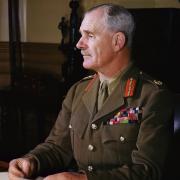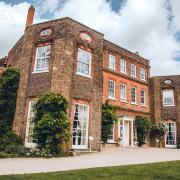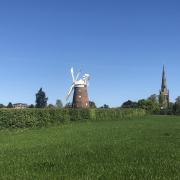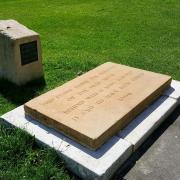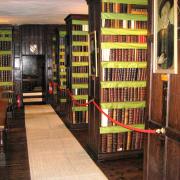By Susan Taylor
One thousand years after the birth of King Harold (he of Battle of Hastings fame) in 1022, Susan Taylor looks at the history of the abbey he once loved
The church bells fell silent, and the great central tower was demolished as the last abbey to be dissolved by Henry VIII closed its doors for the final time on March 23, 1540. Waltham Abbey had, until then, been one of the monarch’s favoured stopovers as he enjoyed hunting in the nearby Epping Forest, sometimes accompanied by his second wife, Anne Boleyn. However, this didn’t stop him from finally including it in his Great Reformation. But we get ahead of ourselves – the Abbey may have fallen in the 16th century, but its rich history stretches back through five centuries to King Canute and the discovery of a legendary cross at Montacute in Somerset.

Our tale actually starts around the year 1030, when the sexton of a church in Montecute had a vision telling him to take the parish priest to the top of the local St Michael’s Hill and dig. Many villagers, hearing the early morning commotion as the pair set off, collected spades and joined them. A large black flint cross carved with an image of Christ crucified was soon unearthed. Under one arm, Christ held a smaller cross and under the other a bell and a copy of the gospels. Unsure what to do with this monumental discovery, the priest decided to alert his monarch and so sent word to King Canute’s standard bearer, Tovi (or Tofig), who was in the area on official business. Tovi arranged for the removal of the artefacts (with the exception of the smaller cross, which was allowed to remain in Montecute), which were all loaded onto a wagon drawn by 24 oxen. But the animals refused to move. It was only when Tovi thought of the small chapel at his own estate at Waltham, which stood on the site of an even older wooden church (dating from around 600AD), that the stubborn oxen began to walk – straight to Waltham.
And so, the disinterred cross found a home. The area became known as Waltham Holy Cross and before long gained a reputation as a place of pilgrimage, not least thanks to stories of the black stone cross ‘bleeding’ when jewellery was placed on it and of its miraculous healing powers.
After Tovi’s death, sometime around 1046, Waltham reverted to the ownership of Edward the Confessor, who bestowed it on Earl Harold Godwinson, later King Harold II. Harold had long credited his prayers at the Holy Cross with curing his childhood paralysis and in gratitude he rebuilt the church, which was dedicated in 1060. It is said that he knelt in worship before the cross on his way to fight the Normans in 1066 and that he and his troops used the rallying battle cry to fight and die in defence of the Holy Cross and their English land. As every schoolchild learns, Harold died a soldier’s death on the battlefield. At first, the victorious Normans refused to allow the removal of his body for burial, but eventually Harold’s wife, Edith Swanneck, had it taken to Waltham Holy Cross where it was formally buried. Over the ensuing years, the church was again rebuilt and Harold’s body moved, so that the exact resting place is today unknown. A simple stone slab marks the most likely spot, outside the church, near the site of the original high altar.

The Abbey’s history doesn’t end there. In 1170, Thomas Beckett was famously murdered whilst at vespers in Canterbury Cathedral by four knights who mistook an angry outburst by Henry II as an order to kill him. Seven years later, Henry refounded the church at Waltham Holy Cross as part of his penance for the death of his dear friend and it became a priory of Augustinian canons.
By the end of the 12th century, it was a large and powerful Abbey and the most important Augustinian house in England. It continued to flourish throughout the Medieval period, during which time it was extended even further to include a cloisters, chapter house and lady chapel. It was a favourite stopover for monarchs on hunting trips or wishing to distance themselves from the rigours of court for a while, as well as being an important religious site. It is thought that during Henry VIII’s reign, two of his advisors met with Thomas Cranmer at Waltham Abbey to discuss his ‘marriage difficulties’ and so began the break with the Roman Catholic Church. Eventually, even the mighty Waltham Abbey could not be saved from destruction – although a small part of the building was allowed to remain as a parish church for the townspeople.
Sadly, the great central tower of the Abbey, which housed the church bells, was demolished, along with most of the building, and the Holy Cross vanished. Rather than lose their bells, the townsfolk took them away for safekeeping until funds could be found to rebuild the tower and reinstall them. A final twist in the tale, though, came when the tower was rebuilt in the 16th century at such monumental cost that the bells had to be sold to pay for the work.

And so, the church of Waltham Holy Cross and St Lawrence remains today. Of the once great and powerful Abbey, only the 14th century gatehouse and a small part of the cloisters now stand. Its gardens form a peaceful space in which to while away an hour or two, and the River Lea flowing nearby provides a haven for a variety of wildlife, the peal of Medieval bells and the whispering of monks at prayer now replaced by birdsong and rippling water.
You might also be interested in St Botolph's Priory: https://www.greatbritishlife.co.uk/things-to-do/nostalgia/st-botolphs-priory-in-colchester-8870168





